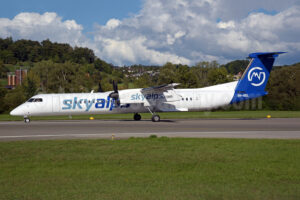During World War II, Great Britain and Germany deployed powerful 24-cylinder engines for their aircraft.
Both nations began working on the engines before the war started. Ultimately, the British proved more successful with their Napier Sabre engine over the German Junkers Jumo 222.
British Napier Sabre 24-Cylinder Engine
Great Britain first considered developing the 24-cylinder Napier Sabre engine in 1937. The Napier & Son manufacturer had been making engines since 1917, during The First World War, when they produced the Napier Lion, a 12-cylinder motor they produced until 1943. Engine designer Frank Hord theorized that an engine with more, smaller cylinders would be more powerful than one with fewer, larger cylinders.
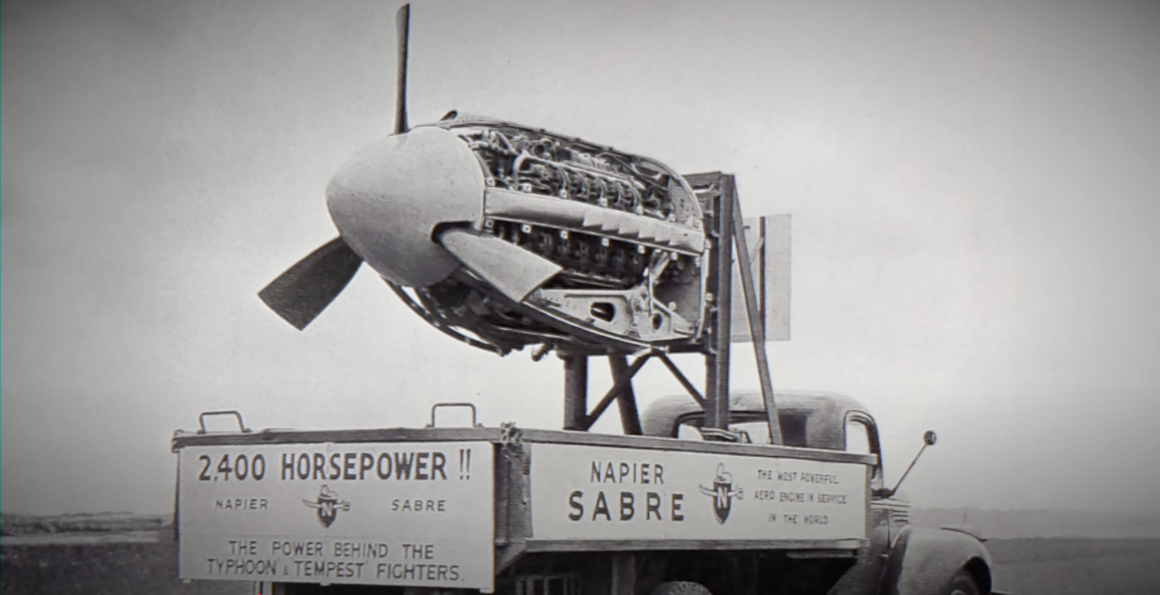
The Napier Sabre essentially consisted of four 6-cylinder engines geared together with twin crankshafts into a single output shaft. It was liquid-cooled and had a new system of sleeve valves instead of poppet valves used on most other engines. The sleeve valves made the Napier Sabre more powerful and fuel-efficient. Napier first tested it in January 1938 at 1350 horsepower, and by that summer, it was putting out 2200 and 2400 by the end of that year.
British Speed Engine Production as War Begins
Following the successful 100-hour testing of the 24-cylinder engine, the British rushed it into production at the beginning of the war. They installed it into the Hawker Tempest V, Typhoon 1, and 1B fighters and the Folland Fo. 108 fighter.
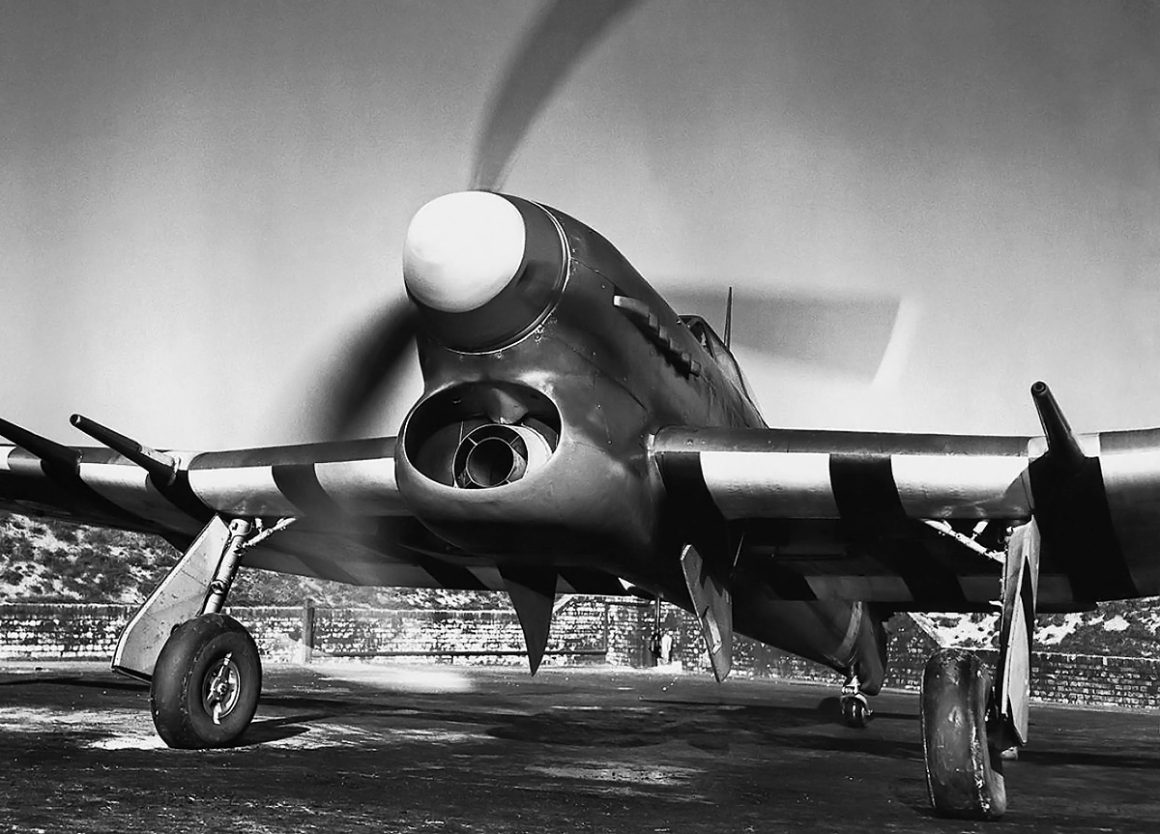
The powerful engine gave the fighters outstanding low-altitude performance. The Napier Sabre was the fastest Allied engine, giving aircraft more speed than the 12-cylinder engines in British Spitfire fighters.
Manufacturing and Performance Problems with Napier Sabre
Despite its performance, the Napier Sabre had significant problems and drew complaints from pilots and maintenance crews. Some of these issues were manufacturing errors, with bits of metal left inside engines, often resulting in broken piston components. Crews also experienced oil overheating and engine seizures.

Although the engine was effective at low altitudes, it was not strong enough above 20,000 feet. In 1942, Napier started working on a supercharger to provide better high-altitude performance. However, the company was sold to English Electric. They gave up on the supercharger but improved the engine’s reliability, extending its time between overhauls from 25 to 250 hours.
Another problem occurred in 1944 during operations at Normandy. The 24-cylinder engines were sucking airborne sand, which grounded the planes until new air filters could arrive more than a week later.
Napier Sabre 24-Cylinder Engines Effective in Combat
The Napier Sabre 24-cylinder engine was effective against German aircraft throughout the war. The Typhoons became the fastest low-altitude aircraft and were especially successful at attacking German V1 bombs.
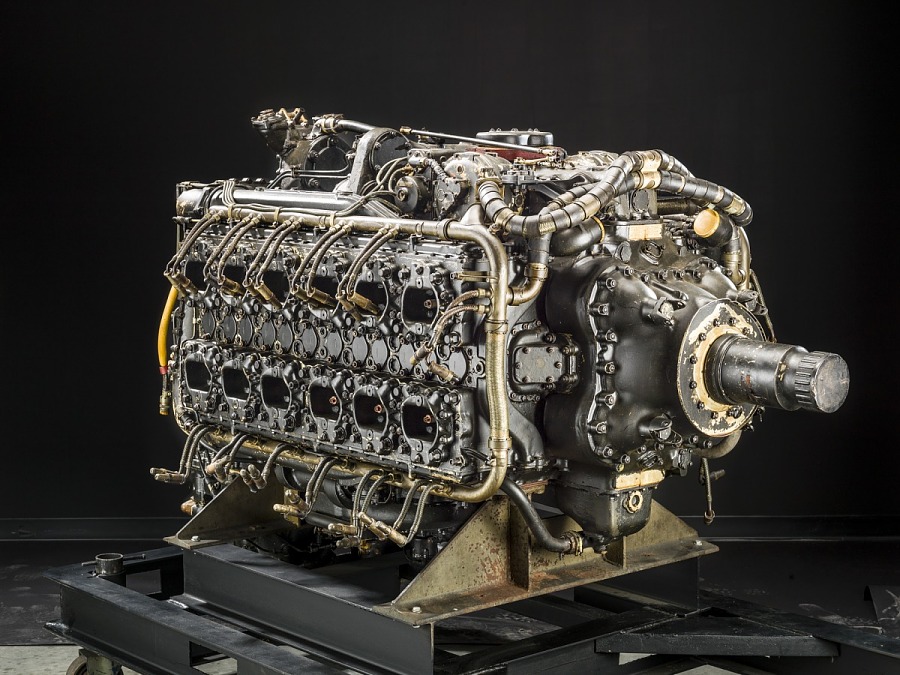
As the war progressed, the British wanted to increase the power of their engines. Napier considered using water and methane injection to raise the Sabre’s output to 3000 horsepower. They even experimented with a 32-cylinder version, which they hoped would produce 4000 horsepower. It did not make it into production.
German Jumo-222 24-Cylinder Engine
Before and during World War II, the Germans worked on their own 24-cylinder engine, the Junkers Jumo 222. In 1936, the German Air Ministry (RLM) decided they needed an 1800-horsepower engine for the bombers in development. Ferdinand Brandner joined Junkers and took charge of the project. He set an initial goal to build a new 2000-horsepower engine and named it Jumo 222. They finalized the initial design in 1937.
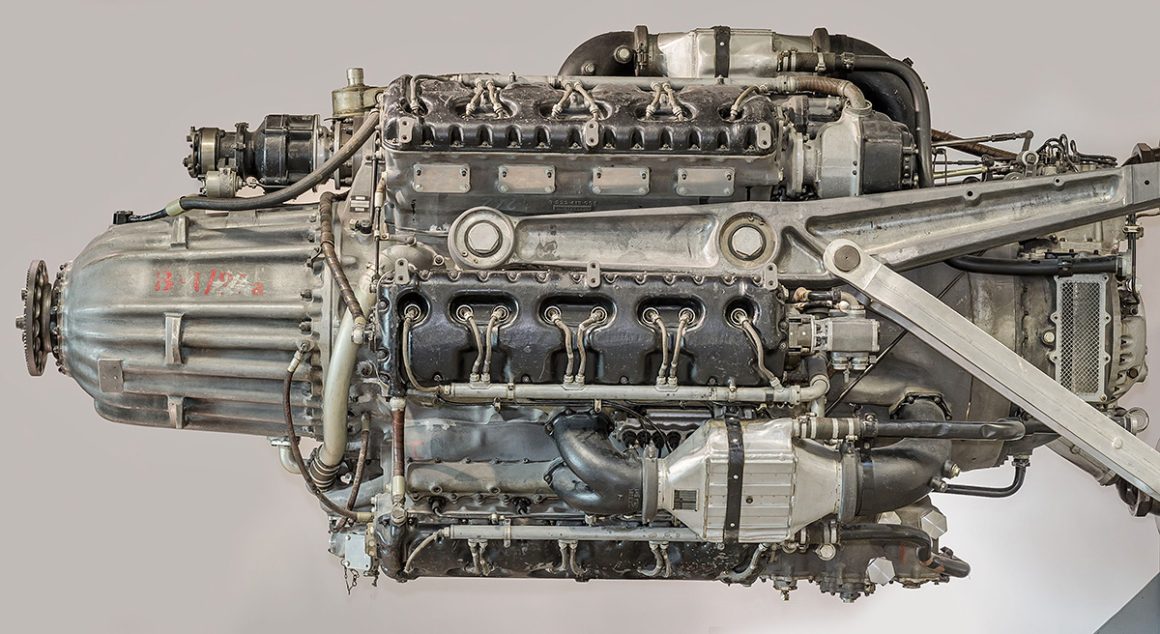
The plan was for the Jumo 222 to power the Junkers Ju 88 bomber. During the Second World War, Junkers was the only Axis company building both aircraft and engines, something that would contribute to its eventual failure.
The Jumo 222 was a liquid-cooled, radial, 24-cylinder engine. It had six-cylinder banks with four cylinders each, positioned around the crankcase in a hexagonal pattern. As the months progressed, the Germans continually increased their requirements for power output from the Jumo 222.
Germans Planned to Use Jumo 222 Engine in New Bomber
Along with the Ju 88 bomber, the Germans were developing a new high-speed medium bomber, the “Bomber B.” They expected it to carry a 4410-pound bomb load, 2,237 miles, at about 373 miles per hour. They eventually tested the Jumo 222 in 11 different aircraft, including the bombers: a Focke-Wulf Fw 191 and a Heinkel He 219 Uhu (“Eagle-Owl”).
In 1940, following weight increases to the JU 288 from adding a crew member and new equipment, the Germans raised the power requirements for the 222 to 2500 horsepower. The next version of the 24-cylinder Juno 222, the C/D, came in 1941 with a 2500-3000 horsepower requirement for high altitudes. This was initially just a goal until 1945 when the RLM determined they “desperately” needed a 3000-horsepower engine.
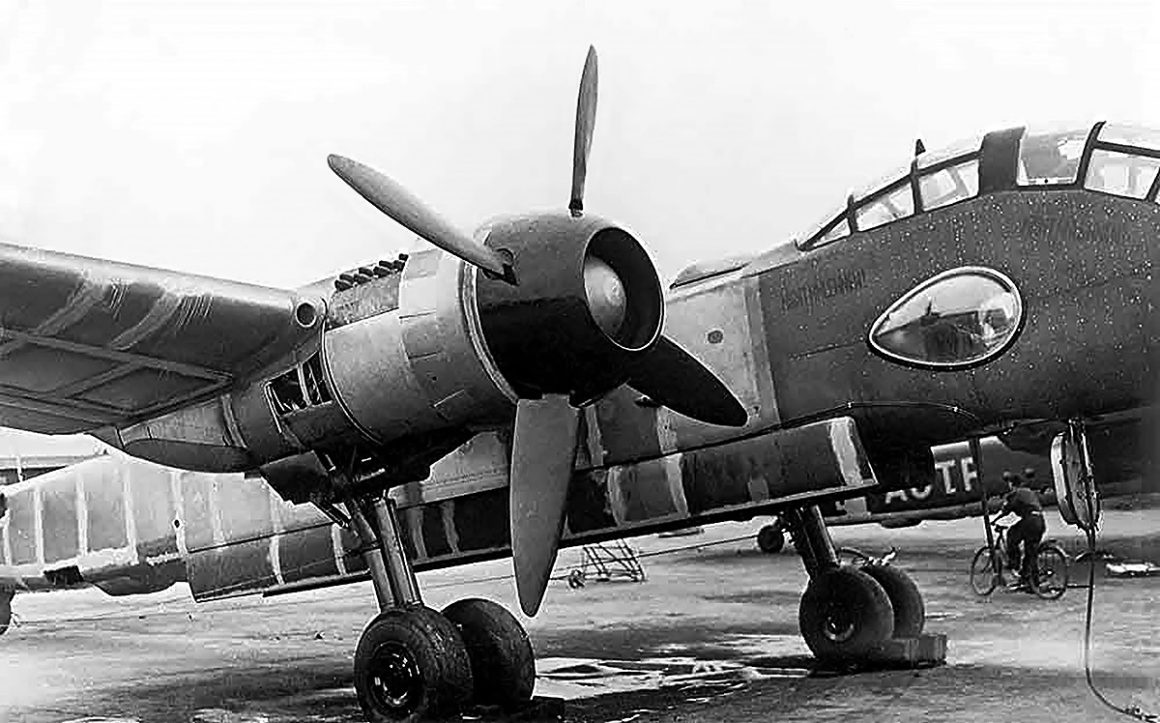
Allied Bombing Impacts Engine Production.
While the Jumo 222 did well in testing, problems interfered with its development. Allied bombing in 1943 and 1944 caused shortages and began to affect German industry. This forced the RLM to choose which aircraft and engines to produce.
Delays for Jumo 222 Due to Changing Requirements
Perhaps the most interesting problem for the Jumo 22 was that it may have been delayed intentionally. Some have gone as far as suggesting that the requirements kept changing, causing both the engine and JU 288 bomber to fail.
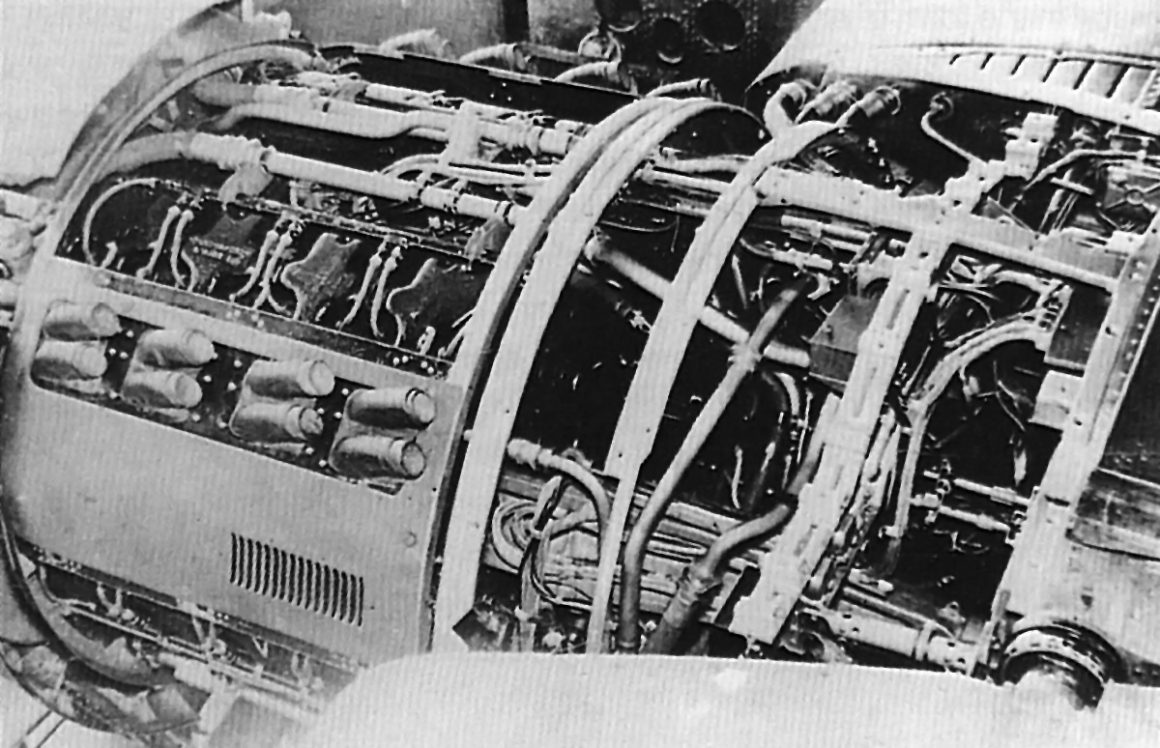
Ferdinand Brandner, one of the 24-cylinder engine’s designers, said, “The tragedy of this engine development lay in the continual demands for performance increases that came from the airframe development side, which, because of continually increasing weight excesses, could not attain the calculated flying performance. The Jumo 222 was developed to death.”
Frequent Design Changes Possibly Used to Prevent Improvements
According to some reports, Erhard Milch, Air Inspector General of the Luftwaffe and in charge of aircraft production, wanted the program to fail. Milch announced he was concerned that Junkers would monopolize engines and aircraft. Some felt he was altering production requirements “just as they were about to be met by Junkers.” Regardless of the reason, Junkers could never keep up with all the changes.
The Germans saw an eventual need for more powerful powerplants than the Jumo 222 24-cylinder engine. In 1937, they started planning for a Jumo 255. This would have 36 cylinders, and they forecasted it to produce 3500-4000 horsepower. Germany never actually built the Jumo 225.
British Napier Sabre More Successful Than German Jumo-222
Both the Napier Sabre and German Jumo 222 engines had problems throughout their development. However, the Napier Sabre was clearly more successful in the war effort.
The proof is in the numbers: Great Britain produced about 5,000 Napier Sabres, while Germany only produced 289 Jumo 222s.
Credit: avgeekery.com

